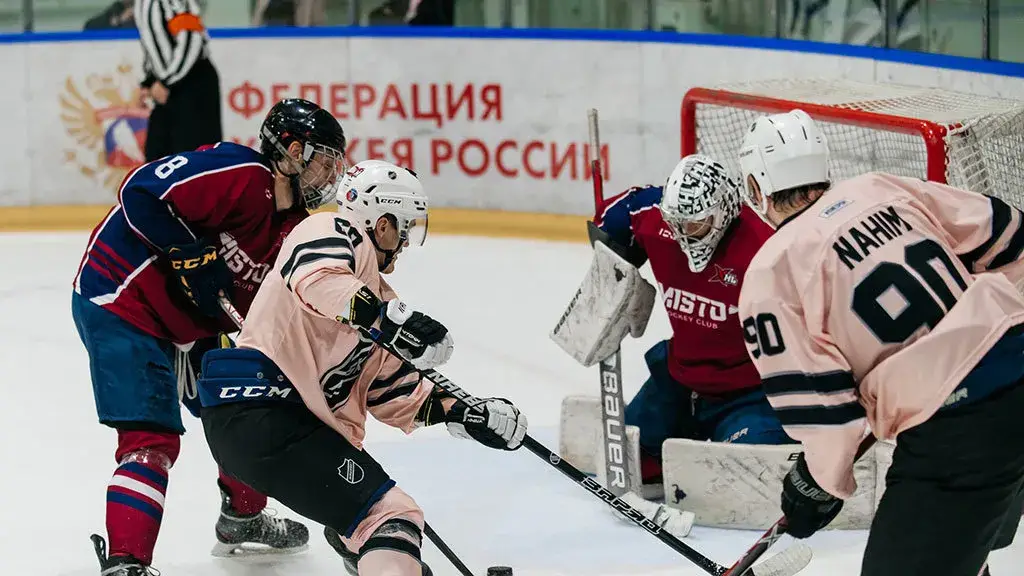At first glance, hockey seems to be all about ice, a puck, and loud stands, but the types vary greatly, and each one is a unique combination of skill, endurance, and team spirit. In this review, we will cover all the main forms of this exciting game: ice hockey, bandy, field hockey, and inline hockey. We will delve into the history of each type, study its rules, and consider interesting differences.
Ice Hockey: Ice Classics
Ice hockey, which is also often called “ice hockey”, began its history in Canada at the end of the 19th century. In 1875, the first recorded meeting took place in Montreal, which marked the beginning of its development. Cold winters, frozen lakes, and an uncontrollable desire to skate made the discipline an integral part of Canadian winter fun. Over the decades, it has evolved, moving from informal matches on frozen ponds to professional leagues with worldwide recognition. In 1917, the National Hockey League (NHL) was created.

Rules of Ice Hockey
The basic rules are very simple: two teams of six people, including a goalie, compete on the ice rink. The goal is to score a puck into the opponent’s goal using a stick. But if you delve into the details, it is clear that both physical and mental effort is needed. During the match, you can use forceful techniques to block the opponent, but you cannot touch him above the shoulders with the stick. Players have to develop incredible speeds and make instant decisions in conditions of fierce competition. In NHL matches, the puck can accelerate to 160 km / h.
Popularity and international recognition
Today, ice hockey is one of the most popular sports in the world. It is especially loved in North America, Russia, Scandinavia and Central European countries. The most prestigious tournaments: NHL, Olympic Games and World Championships, where the best representatives of the discipline on the planet fight for victory.
Bandy: space and tactics
Bandy originated in Scandinavia and Russia in the 17th century. Its popularity was due to long winters and vast frozen lakes, which served as ideal playing fields. At the beginning of the 20th century, official rules were adopted, and in 1955, the first Bandy World Championship was held. Bandy is still especially popular in Russia, Sweden and Finland, where annual national and international competitions are held.
Rules and differences
The main difference between bandy and other types is the use of a ball instead of a puck and an enlarged playing area. Matches are held on ice with an area of up to 100 by 60 meters, which is twice the size of a standard field. There are 11 players on a team instead of 6, and the process is based on more football principles: there are offsides, free kicks and even penalties. The rules include a ban on body checks, which makes each match more tactical and less dangerous. Bandy requires incredible endurance from athletes, as matches last 90 minutes and the size of the field forces them to cover huge distances.
Where is bandy played?
 The discipline is widely popular in Russia, Sweden, Finland and Mongolia. In these countries, it has received the status of a national sport, and championship matches attract tens of thousands of spectators.
The discipline is widely popular in Russia, Sweden, Finland and Mongolia. In these countries, it has received the status of a national sport, and championship matches attract tens of thousands of spectators.
Russian Cup:
- It is held annually and brings together the best teams.
- It is one of the most prestigious national tournaments.
- It serves as an excellent platform for identifying new talents.
Russian Championship:
- It is held annually with the participation of leading clubs.
- The main stage for determining the strongest team in the country.
- The matches attract a large audience and are broadcast on television.
World Championship:
- It is held under the auspices of the International Bandy Federation (FIB).
- The tournament is attended by national teams from different countries, including Russia, Sweden, Finland and others.
- The main international competition and the place where teams compete for the title of the best team on the planet.
Field Hockey: A Summer Alternative
One of the oldest types of hockey, with roots in Ancient Egypt and India. Archaeologists have found images of people with sticks and balls on frescoes dating back to 2000 BC. The modern version began to take shape in England in the 19th century, and in 1908 the discipline was included in the Olympic Games.
Field Hockey Rules
The games are played on a field similar in size to a football pitch, with two teams of 11 people participating. The goal is to score a ball into the opponent’s goal using a stick. The ball is small and hard, which requires a high level of control and precision from the participants. The distinctive feature is its dynamism and physical fitness requirements, since the field is larger than in ice hockey, and the players must constantly move to take the right positions.
International tournaments and popularity
The sport is popular in countries with warm climates: India, Pakistan, Australia, the Netherlands, Argentina. The FIH holds many tournaments every year: India and Pakistan dominated this discipline for most of the 20th century, winning a huge number of Olympic medals.
Inline hockey: drive on wheels
Inline hockey emerged at the end of the 20th century, when the popularity of roller skates reached its peak. This type of hockey is different in that the game is played on roller skates, which makes it accessible in the warm season and in places where there are no ice arenas. The first world federation for the discipline was founded in 1995, and soon after that the first international tournaments began to be held.
Inline hockey rules
The basic rules are similar to the classic, although there are several important differences. The match is held on a smooth rink, each team has four field players plus a goalkeeper, and power moves are prohibited. This type of hockey is less dangerous and faster in terms of transitions from defense to attack. Matches are held in four periods of 12 minutes, which allows you to maintain a high pace and energy.
Development and popularity
Inline is especially popular in the United States, Canada and some European countries. Its simplicity and accessibility are attractive to young people and those who want to stay in shape during the summer. In addition, many professional hockey players play inline in the off-season to stay in shape.
Types of hockey: conclusion
 Types of hockey are amazing in their diversity and uniqueness. Each of them has its own special atmosphere, rules and traditions. No matter which one you prefer, they all offer incredible emotions, team spirit and physical activity. Choose your path and enjoy the game in every form.
Types of hockey are amazing in their diversity and uniqueness. Each of them has its own special atmosphere, rules and traditions. No matter which one you prefer, they all offer incredible emotions, team spirit and physical activity. Choose your path and enjoy the game in every form.

 en
en  ru
ru  de
de  ar
ar  es
es  hi
hi  fr
fr  nl
nl  it
it  pt
pt  el
el 



